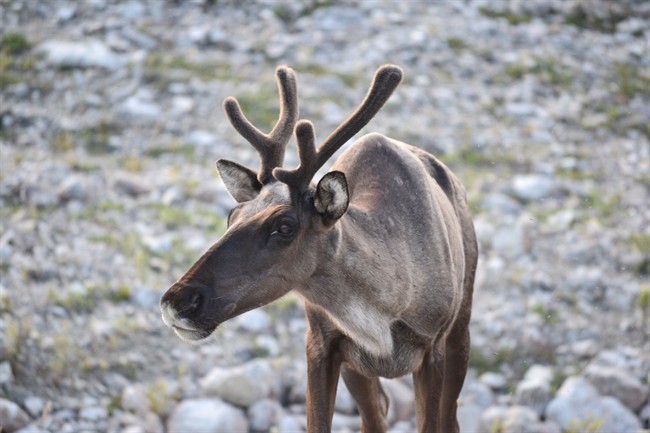The federal government says it will provide extra cash to help Alberta live up to Ottawa’s demands on restoring threatened caribou herds.

“We’re willing to partner with Alberta in terms of money and we want to work with them,” Jonathan Wilkinson, parliamentary secretary to federal Environment Minister Catherine McKenna, said Thursday.
Wilkinson did not release an amount.
Alberta Environment Minister Shannon Phillips took an industry-heavy delegation to Ottawa to tell McKenna that the province needs more money and time to live up to federal demands on restoring caribou herds.
READ MORE: Alberta’s stance on caribou a ‘national test case’ of Species at Risk Act
In a release, Phillips said the province remains “fully committed” to recovering its herds, some of which are down to a few dozen animals subsisting on landscapes heavily transformed by decades of logging and drilling.
Alberta needs more time to study the economic impact of restoring those lands to meet federal guidelines, she said. Phillips wants $50 million over three years for that study. She also wants an ongoing commitment to fund restoration costs that she says could reach $1 billion.
“Fully understanding social and economic impacts is a crucial part of developing a made-in-Alberta plan for achieving caribou recovery,” she said in a release.
Caribou herds are dwindling across Canada and the federal government has made their recovery a priority. It has required provinces to file caribou recovery plans that restore at least 65 per cent of critical habitat.

Get daily National news
Few have. Alberta recently suspended parts of its plan over economic impact concerns.
READ MORE: Alberta suspends caribou protection plan, asks for assistance from Ottawa
A report from McKenna on Monday found significant gaps in how provinces protect caribou habitat. It concluded every province has permitted industrial use on that land without taking federal legislation into account.
Stan Boutin, a University of Alberta caribou expert who has followed debate and research for years, said further study on economic impact is unnecessary.
“There’s no doubt if you move toward protection, (there will be) enormous economic impact. We’ve shown that in spades.”
He said Alberta’s landscape is so heavily altered that restoring it to the point where it can support caribou herds will take at least 20 years and probably longer.
“That will take way too long for their positive effects to even be felt by the caribou.”
READ MORE: Industry, conservationists divided over Alberta’s caribou recovery plan
Even pulling industry out of caribou range immediately wouldn’t help, he added.
“We have been in that (eco)system so much that even if we walk away today, that would be no good for caribou.”
Wilkinson said much caribou habitat is so damaged that some of the federal cash will have to go toward controversial measures such as fenced-off maternity pens for pregnant cows and wolf cull programs. Bringing back caribou range will be the work of decades, he said.
“We need to get to restoration of critical habitat, but that takes time.”
Although not all wildlife scientists agree with him, Boutin said it’s time to give up on the idea of wild, free-ranging, self-sustaining caribou. Herds will need aggressive management for the foreseeable future while slow, steady restoration takes place and industry goes about its business.
READ MORE: Alberta government unveils draft plan to address endangered woodland caribou herds
“We are in the business of managing caribou. That’s not full husbandry, but it’s getting way closer.”
- Attempted kidnapping near Banff Christmas Market prompts police investigation
- Major water main break traps people in vehicles, affects 2K Calgary homes
- Toronto woman dies after falling into deep snow at Sunshine Village
- ‘He hunted them’: Family launches petition to keep B.C. mass murderer behind bars








Comments